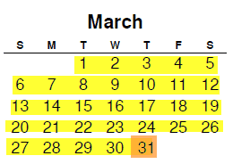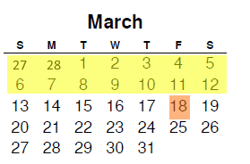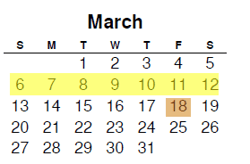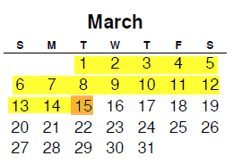Payroll Period: Which one suits your business model the best?
por Jorge Fernández | December 15, 2021 | Insights

Selecting the right period for your payroll is very important; once it is set, it is difficult to change it.
In most cases, little thought is given to this issue, but the right selection can save a lot of administrative headaches while your business grows.
What is the Payroll Period?
The payroll period is defined in section 3401(b) of the Internal Revenue Code as the period for which businesses normally pay their employees.
This can be:
- Weekly (paid for example, every Friday)
- Semi-Monthly (paid on the 15th and the last day of each month)
- Bi-Weekly (paid every 2 Fridays, for example)
- Monthly (paid on the last day of each month).
Why is it important?
The correct application of pay periods is essential for employees to feel comfortable and ensure good compliance with obligations.
As an employer, you should find a balance between the management of payroll expenses and your employees' preference for more frequent payments.
So, before making a decision on the payment period, analyze the business’ cash flow and liquidity.
Most common payment periods and their examples
In the following examples, we explain the most common periods. The yellow highlighted area marks the payment period and the orange highlighted date indicates when the payroll is deposited.
It is important to remember that if direct deposit is used, it usually requires processing two days in advance.
Monthly

A monthly payroll is processed once a month. Usually on the first or last day of the month.
This period is good for companies with few employees, executives, or high-compensation staff.
It generates 12 annual payroll payments.
Semi-Monthly
A semi-monthly payroll is usually paid on the 15th of the month and the last day (or first day) of the month.
This period is good for companies with salaried employees.
It generates 24 annual payroll payments.
Bi-Weekly

A bi-weekly payroll is paid every two weeks.
This period is excellent for companies with hourly employees.
Although you can pay on the last day of the period, we recommend paying it on the following Friday.
This will allow the manager or administrator to validate the information and process the direct deposit.
Weekly

A weekly payroll, as the name implies, is paid every week.
This period is convenient for companies with a high turnover of hourly employees.
Although you can pay on the last day of the period, we recommend paying the following Friday.
This will allow to validate the information and process the payments.
In conclusion
Don't take the payroll period lightly.
Understanding the various programming options and the implications of each of them will help you determine which one fits your business model the best.

